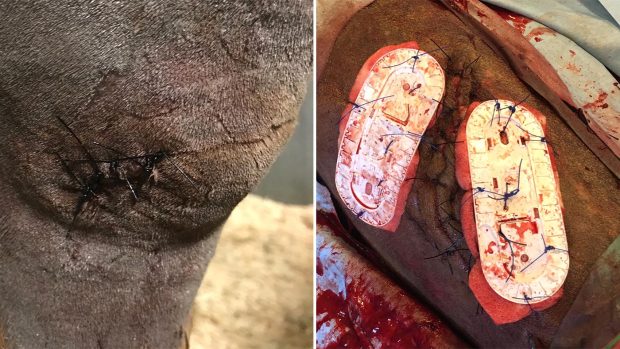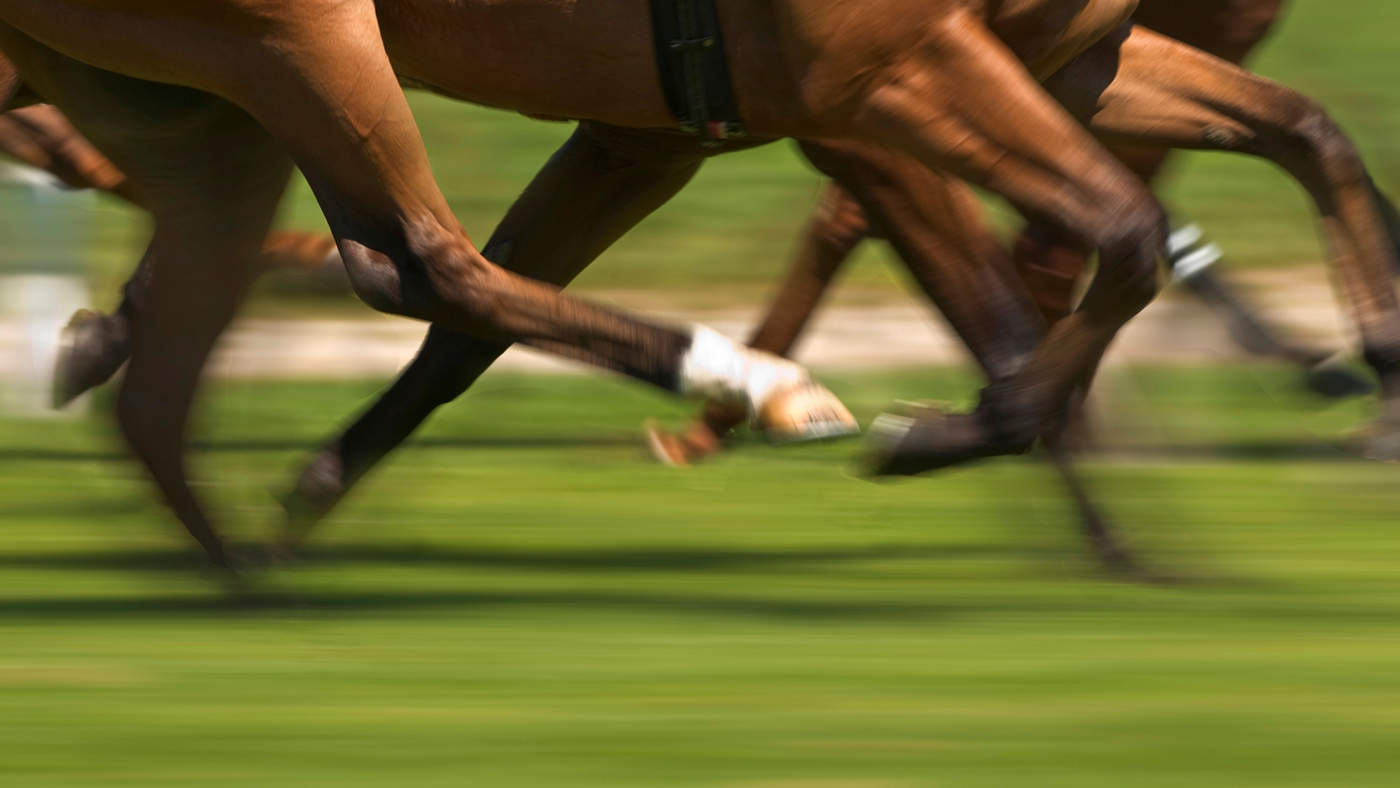The term “broken knees” does not automatically refer to damage to the bones that make up the knee joint. It is commonly used to describe a condition in which one or both knees suffer serious damage as a result of impact when they are bent (flexed). This leads to the skin and tissues over the front of the knees being damaged.
Most cases of broken knees occur when the horse stumbles and goes down on the road or a hard gravel track. The full weight of the animal is taken for an instant on the flexed knee or knees in contact with the ground. Usually, it all happens quickly and the horse gets up straight away, but severe damage to the front of the knees may have occurred, even though it may not be noticed immediately.
The skin wound on a broken knee is never simple. It may appear to be a large, round graze, a semicircular flap or may even look as though an area of skin has been cored out. Whatever the nature of the damage, it will almost certainly be contaminated with gravel, stones, mud or other debris.
There are three reasons why broken knees are serious:
- The injury occurs when the tissues on the front of the knee are tightly stretched and most vulnerable
- The structures beneath the skin at this site are important and may also be damaged
- The process of healing is protracted and may leave permanent disability
Stretched tissues are always more easily damaged than flaccid ones. When the knee is flexed, the skin on the front of the joint is very tight, like a drum, and will split or tear easily. The added effect of bruising and crushing make the wounds impossible to stitch in most cases.
Even if the only layer affected is the skin, the vet will almost certainly not be able to repair the wound with sutures. It will be treated carefully to allow slow healing over many weeks. The initial injury may look worse after a week or so as further skin, damaged by the impact, dies and peels away. This may leave a large ulcer over the front of the knee, which will take weeks or months to heal.
Treating mild cases
If a horse goes down on to his knees on the road, the first thing to do is to hose the knees liberally with cold water. This flushes out debris, gravel and contamination; helps to reduce inflammation and swelling, and prevents the skin edges from drying out.
Knees with superficial grazes that do not make the horse significantly lame may be managed without veterinary assistance. They should be hosed and bandaged with a figure-of-eight bandage when the horse stands in. The horse should be returned to walking exercise within 48hr to encourage mobility and keep the swelling down.
If there is no more than a little stiffness that soon wears off and the grazes dry up in a few days, normal work can be resumed.
Treatment for more severe problems
In cases of broken knees where the skin is completely penetrated or abraded, veterinary attention must be sought to determine whether any of the underlying structures are damaged. At the very least, the vet will want to prescribe a course of antibiotics and anti-inflammatories. Open tendon sheaths or, worse, open joints will require an admission for inpatient treatment and possibly X-rays or even surgery.
Damage to the cartilage of the joint is unusual but can occur. In the very rare case of fractures resulting from a broken knee injury, the vet will want to make certain that fragments are removed and that infection is under control.
Recovery and prognosis
Recovery in any case of broken knees is potentially protracted and frustrating. Where areas of skin are lost or damaged beyond repair, there will be raw, granulating ulcers that take weeks to be covered with skin again.
Bandaging will be essential in the short-term, but knees are not easy to manage under bandages. There is a risk of pressure sores on the back and sides of the knees, where the skin is the only covering of the bony prominences. Proprietary elastic or Lycra tailored knee bandages and boots are quite helpful, but the sooner the knees can be left open the better.
Management then consists of creams and emollients to discourage excessive granulation and encourage skin regeneration. The constant flexing of the knees is a problem and reduces the success of any form of skin grafting.
Movement is essential to mobilise the underlying tissues, especially if there has been damage to tendons or joints. Any attempt to immobilise the horse for long periods to aid skin grafting invariably results in permanently stiff knees with poor flexibility. This increases the chances of the horse stumbling and sustaining the identical injury again.
We have learned to sacrifice rapid skin healing for the sake of mobility, and therefore encourage passive flexions and walking exercise as soon as the patient is able. The best possible result from a bad case of broken knees will be badly scarred but fully functional knees; in the worst case, the horse may be lost because of unresponsive joint infection and damage.



